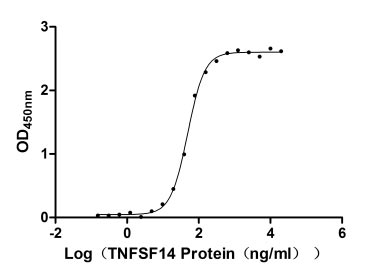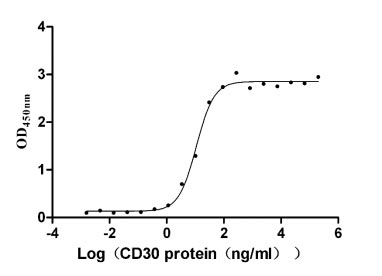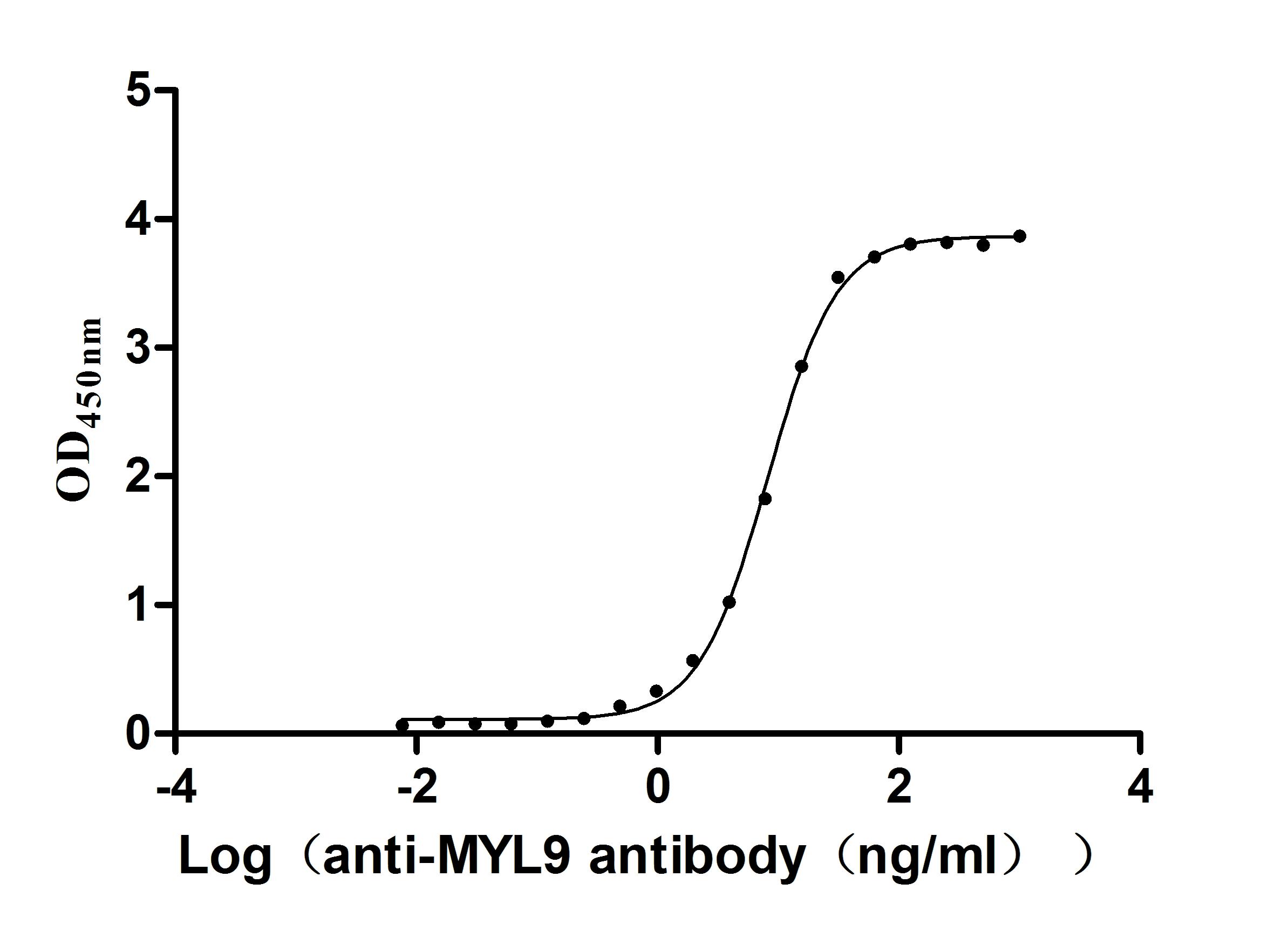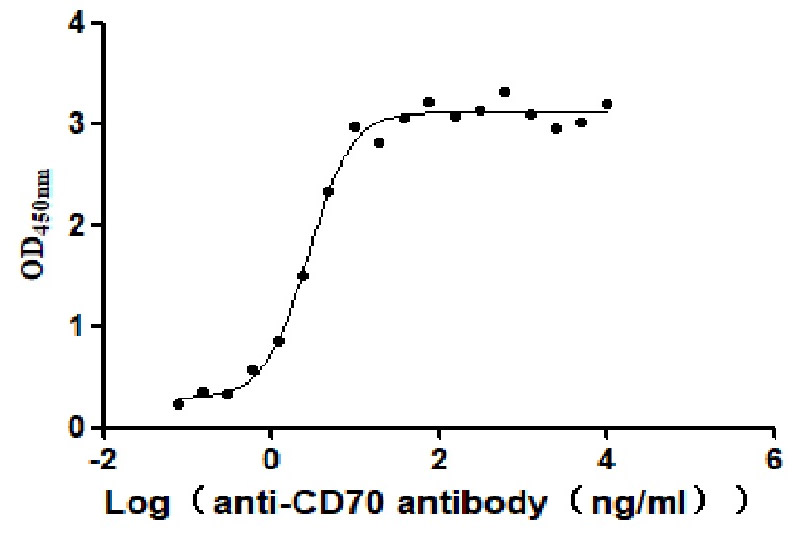Recombinant Mouse Beta-1,3-galactosyl-O-glycosyl-glycoprotein beta-1,6-N-acetylglucosaminyltransferase (Gcnt1), partial
-
中文名稱:小鼠Gcnt1重組蛋白
-
貨號:CSB-EP600616MO-B
-
說明書:
-
規(guī)格:
-
來源:E.coli
-
共軛:Avi-tag Biotinylated
E. coli biotin ligase (BirA) is highly specific in covalently attaching biotin to the 15 amino acid AviTag peptide. This recombinant protein was biotinylated in vivo by AviTag-BirA technology, which method is BriA catalyzes amide linkage between the biotin and the specific lysine of the AviTag.
-
其他:
產(chǎn)品詳情
-
純度:>85% (SDS-PAGE)
-
基因名:Gcnt1
-
Uniprot No.:
-
別名:Gcnt1; Beta-1,3-galactosyl-O-glycosyl-glycoprotein beta-1,6-N-acetylglucosaminyltransferase; EC 2.4.1.102; Core 2-branching enzyme; Core2-GlcNAc-transferase; C2GNT
-
種屬:Mus musculus (Mouse)
-
蛋白長度:Partial
-
蛋白標(biāo)簽:Tag?type?will?be?determined?during?the?manufacturing?process.
The tag type will be determined during production process. If you have specified tag type, please tell us and we will develop the specified tag preferentially. -
產(chǎn)品提供形式:Lyophilized powder
Note: We will preferentially ship the format that we have in stock, however, if you have any special requirement for the format, please remark your requirement when placing the order, we will prepare according to your demand. -
復(fù)溶:We recommend that this vial be briefly centrifuged prior to opening to bring the contents to the bottom. Please reconstitute protein in deionized sterile water to a concentration of 0.1-1.0 mg/mL.We recommend to add 5-50% of glycerol (final concentration) and aliquot for long-term storage at -20℃/-80℃. Our default final concentration of glycerol is 50%. Customers could use it as reference.
-
儲存條件:Store at -20°C/-80°C upon receipt, aliquoting is necessary for mutiple use. Avoid repeated freeze-thaw cycles.
-
保質(zhì)期:The shelf life is related to many factors, storage state, buffer ingredients, storage temperature and the stability of the protein itself.
Generally, the shelf life of liquid form is 6 months at -20°C/-80°C. The shelf life of lyophilized form is 12 months at -20°C/-80°C. -
貨期:Delivery time may differ from different purchasing way or location, please kindly consult your local distributors for specific delivery time.Note: All of our proteins are default shipped with normal blue ice packs, if you request to ship with dry ice, please communicate with us in advance and extra fees will be charged.
-
注意事項(xiàng):Repeated freezing and thawing is not recommended. Store working aliquots at 4°C for up to one week.
-
Datasheet :Please contact us to get it.
靶點(diǎn)詳情
-
功能:Glycosyltransferase that catalyzes the transfer of an N-acetylglucosamine moiety onto mucin-type core 1 O-glycan to form the branched mucin-type core 2 O-glycan. Mucin-type core 2 O-glycans play an important role in leukocyte extravasation as they serve as scaffolds for the display of the selectin ligand sialyl Lewis X by leukocytes.
-
基因功能參考文獻(xiàn):
- we show that Gcnt1 transcription and subsequent P-lselectin ligand induction in Th1 cells is governed by binding of STAT4 and T-bet to a distal enhancer and further regulated by epigenetic marks such as H3K27me3. PMID: 27505708
- simultaneous deletion of the Core2 beta1,6-N-acetylglucosaminyltransferase (C2GnT) enzymes C2GnT1 and C2Gnt2 resulted in delayed expulsion of worms. PMID: 23555902
- plays a critical role in lymphocyte trafficking during chronic inflammation PMID: 14593101
- Distinct functions for C2GlcNAcT-I in the differential elaboration of endothelial venule glycoproteins that set a threshold for the amount of L-selectin needed for lymphocyte homing. PMID: 15319280
- data demonstrate that multiple C2GlcNAcT enzymes can contribute to P-selectin ligand formation and may cooperate with C2GlcNAcT-I in the control of CD8 T cell trafficking PMID: 15778363
- IGnT deficient mice had reduced spontaneous locomotive activity, and the number of peripheral blood lymphocytes was also reduced and renal function decreased in the deficient mice PMID: 16107727
- Data report the x-ray crystal structures of murine core 2 O-glycan (Galbeta1-3[GlcNAcbeta1-6]GalNAc-O-Ser/Thr) (C2GnT-L) in the absence and presence of the acceptor substrate Galbeta1-3GalNAc at 2.0 and 2.7A resolution, respectively. PMID: 16829524
- These results suggest that the core 2 GlcNAc extended glycan chains on megalin can change the ligand-binding affinity and capacity. PMID: 18005667
- Pancreas carcinoma antigen, C2GnT, fused to invariant chain elicits T-cell response and tumor growth inhibition. PMID: 18815556
- Core2 1-6-N-glucosaminyltransferase-I is crucial for the formation of atherosclerotic lesions in apolipoprotein E-deficient mice. PMID: 19057022
- Core2 1-6-N-glucosaminyltransferase-I deficiency protects injured arteries from neointima formation in ApoE-deficient mice PMID: 19372458
顯示更多
收起更多
-
亞細(xì)胞定位:Golgi apparatus membrane; Single-pass type II membrane protein.
-
蛋白家族:Glycosyltransferase 14 family
-
組織特異性:Expressed in kidney, liver, stomach, spleen, lung and brain.
-
數(shù)據(jù)庫鏈接:
Most popular with customers
-
Recombinant Human Tumor necrosis factor ligand superfamily member 14 (TNFSF14), partial (Active)
Express system: Mammalian cell
Species: Homo sapiens (Human)
-
Recombinant Human Tumor necrosis factor ligand superfamily member 8 (TNFSF8), partial (Active)
Express system: Mammalian cell
Species: Homo sapiens (Human)
-
Recombinant Human Intestinal-type alkaline phosphatase (ALPI) (Active)
Express system: Mammalian cell
Species: Homo sapiens (Human)
-
Recombinant Rat Intestinal-type alkaline phosphatase 1 (Alpi) (Active)
Express system: Mammalian cell
Species: Rattus norvegicus (Rat)
-
Recombinant Human Transferrin receptor protein 1 (TFRC), partial (Active)
Express system: Mammalian cell
Species: Homo sapiens (Human)
-
Recombinant Human Myosin regulatory light chain 12B (MYL12B) (Active)
Express system: E.coli
Species: Homo sapiens (Human)
-
Recombinant Human Myosin regulatory light chain 12A (MYL12A) (Active)
Express system: E.coli
Species: Homo sapiens (Human)
-
Recombinant Human CD70 antigen (CD70), partial (Active)
Express system: Mammalian cell
Species: Homo sapiens (Human)



















